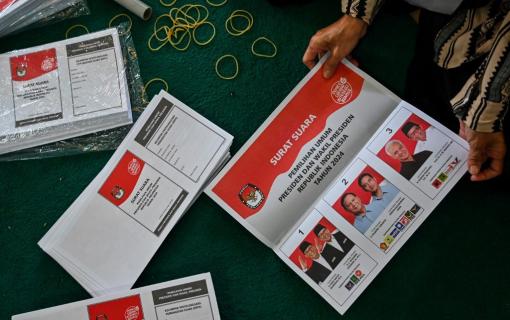
Indonesia’s 2015 Regional Elections
On December 9, tens of millions of Indonesian citizens went to the polls to elect the heads of government of 264 regional jurisdictions across the country including eight Governors, 35 Mayors and 221 Regents.
The elections are the first of three rounds to elect local heads of government in the country’s 34 provinces and 514 regencies/municipalities. The second round of elections is scheduled for February 2017 and the third round is scheduled for June 2018.
This year, the number of women candidates standing for local head of government offices reached an all-time high of seven percent. Similarly, the number of independent candidates reached a new high of 16 percent.
Indonesia’s regional election process is administered by its General Election Commission (KPU), which will manage tens of thousands of polling stations and oversee the tabulation of votes between December 9 and December 18. If necessary, an electoral dispute resolution process overseen by the nation’s Constitutional Court will resolve electoral disputes between December 18 and March 13, 2016.
Direct elections for local government executives have been held since 2005 and, though popular with the electorate, have had to be defended against political challenges aiming to rescind them in favor of indirect elections in which local parliaments would choose the heads of local government. Most recently the House of Representatives passed a bill in fall 2014 moving from direct to indirect local elections. Civil society was active in defending direct local elections, and, in a popular decision, then President Susilo Bambang Yudhoyono intervened to override the bill.
IFES Election Visitors Program
Through its Election Visitors Program, IFES, along with 112 international visitors, witnessed the implementation of the regional elections in South Tangerang and Depok, outside of Jakarta. Participants in the program saw the opening of polling stations at 7:00 a.m. and saw polling stations in all parts of South Tangerang until polls closed at 1:00 p.m. and the counting process was conducted.
Many polling stations welcomed the foreign participants as they witnessed this important day in Indonesia’s democratic process. Several polling stations were not only set up in accordance with the KPU’s regulations, but many went to great lengths to decorate and attract voters. IFES teams visited polling stations located inside schools, in the parking lots of businesses, in front of a local Buddhist temple, and in local neighborhood parks as well as village areas. Nevertheless, participants noted the challenges of enforcing standards for the placement of party/candidate observers, the representation of women as poll workers, the posting of voter list information, and access for voters with disabilities. The counting process in the polling stations visited took place quickly and efficiently. On average, the polling stations visited had a voter turnout of around 200 voters of the 400-500 people registered per station. The counting process was conducted in most locations until 3:00 p.m.
More information on Indonesia’s regional elections can be found at RumahPemilu.org.









